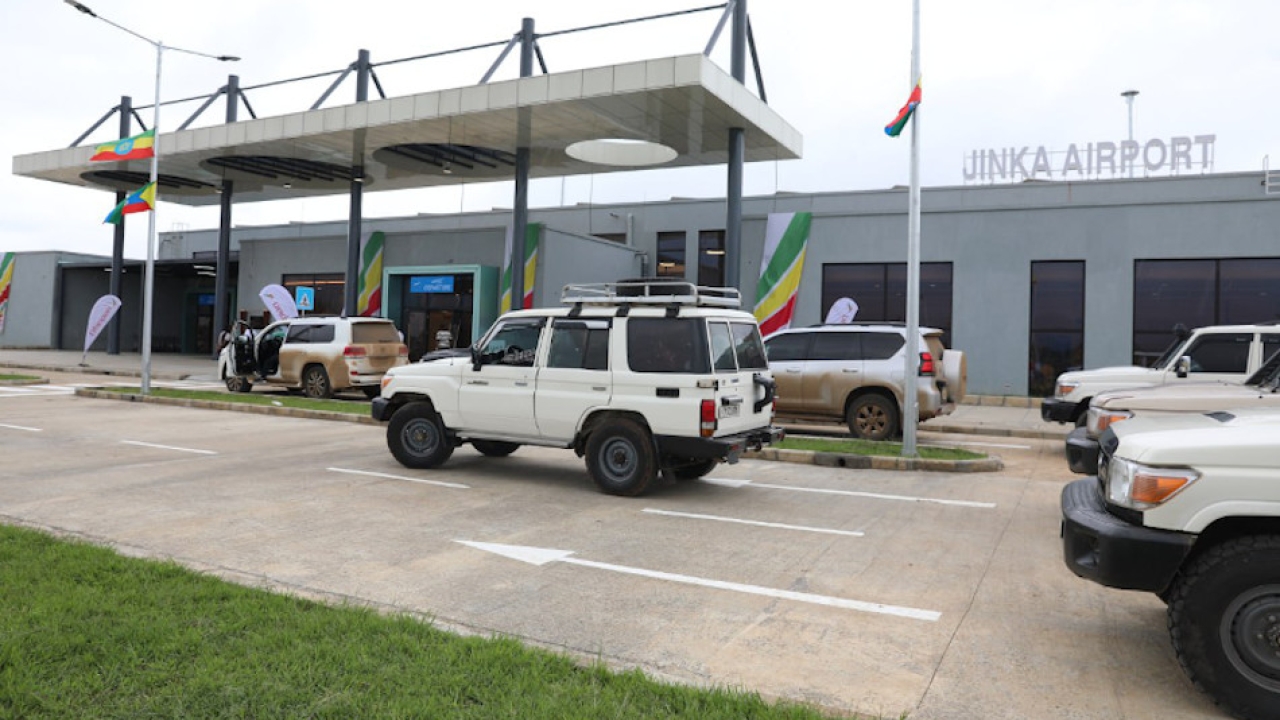Uganda’s new airport rising from the bush
A new international airport is about to emerge in western Uganda, as the country seeks to unlock its oil wealth. Alan Dron reports.

The vegetation has been cleared and a huge swathe of reddish soil exposed near Hoima, in Kabaale District, as construction of Uganda’s second international airport gets under way.
By 2020, the first aircraft are due to be landing on a new runway, as the airport, designed to support the nation’s nascent oil and gas industry, takes shape.
The airport has come about because the oil industry is concerned that the local road network is inadequate to support the heavy traffic required, both to exploit nearby oil reserves and to build the new refinery that will be constructed close to the airport.
The airport is some four hours by road from the capital, Kampala. Until now, Kampala’s Entebbe Airport has been the country’s sole international aviation gateway.
When complete, Hoima will boast a single 3.5km x 75m runway, as well as 4km of access roads. A terminal building with a floor plan measuring 36m x 90m will have both cargo and passenger facilities, together with associated offices, under one roof.
In early 2018, contractors COLAS UK and joint venture partner, Solel Boneh International Holdings, the international arm of Israeli company, Shikun & Binui, started to clear bush, create access roads for construction traffic and fence off the 29sqkm site.
The runway and airport have been designed with the ability to accommodate the world’s largest cargo aircraft, including Boeing 747-8Fs and Antonov An-124s, which will be used to ferry in the outsize equipment needed for the construction of the refinery and associated oil industry infrastructure.
Indeed, under a tight deadline for such a large project, the freighters will be landing on the new runway in 2020, around a year before the terminal is scheduled for completion, to allow work on the oil project to proceed as quickly as possible.
Looking ahead, however, Hoima will also be a passenger airport and, in the longer term, will support tourism; several world heritage national parks are in the area. The airport will be owned by the Civil Aviation Authority of Uganda.
The airport development is backed by the Ugandan Government, which agreed terms for construction funding with the United Kingdom; the UK’s export finance arm is providing more than $300 million towards the project, the largest loan ever provided by the UK to a sub-Saharan African nation.
The new infrastructure is expected to give a significant boost to the Ugandan economy, which is currently reliant on fuel arriving by the costly overland route from Kenya – much of it from Mombasa, 1,000km away.
By late last year 650 people were already on site. Under an informal agreement with the local Ugandan authorities, members of local communities have priority access to work and around 30% come from the region, while 70% are from elsewhere in Uganda. In addition, there is a small number of expatriates.
The immense scale of Hoima has demanded careful logistical planning but the schedule of work is progressing rapidly. By November 2018, the whole length of the runway and the access roads were already under construction, said COLAS UK.
Close to 1cukm of gravel had already been moved, and re-used to build the runway embankment. This is just the start – a further 6cukm of gravel will be moved before the project is complete.
Work on the runway should be substantially complete by mid-2020. Some 13,000 tonnes of bitumen will have to be imported to complete the surfaces but much of the other material can be locally sourced.
“There is still much to be done before the final runway surface can be laid,” said a COLAS UK spokesman. “It is challenging terrain. Some areas must be built up by 25 metres, while elsewhere the site needs to be cut down by 12 metres. Around the edges of the site, dense bush, forest, wetlands and rivers must be protected.”
Extensive engineering studies have been conducted to avoid or minimise environmental impact.
Stay up to date
Subscribe to the free Times Aerospace newsletter and receive the latest content every week. We'll never share your email address.

